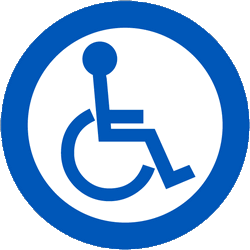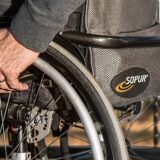Writing Strategies for UK Students with Disabilities
Writing is a daunting task, especially for special needs and disabled students. Students who are facing learning issues find it difficult to write and communicate. The teaching method for such kids is therefore different. Here are some strategies to cope up with disabilities.
Assess the Student’s Caliber
The first strategy to adopt is to gauge the student’s present abilities. Understand what kind of communication the student is most comfortable with. Which words does he use the most in writing? There are special standardized assignments to assess the student’s performance. Once you know where the student stands, you can devise writing strategies. Expert professionals from WriteMyEssayForMe suggest making writing a fun task. Apart from writing skills, listening and speaking skills are equally important when comprehending information. Listening skills involve comprehension skills and the ability to understand what others say. Speaking skills involve expressive skills where the student’s ability to narrate events and happenings around them is judged. Moreover, to better understand a student’s writing acumen, there are special tools to assess their motor skills, comprehension skills, and visual discrimination.
Make Writing Task Fun
Professional writers from WriteMyEssayForMe co uk suggest that teaching students the technical aspects of writing will make it boring. Instead, if students are taught the purpose of writing, it will help them express freely without worrying about how it is written. Consider ways beyond the common practices of teaching children how to write. One of the biggest writing strategies for students with learning disabilities is to help them organize their thoughts and ideas. Allowing them to pen down their thoughts is an effective first step in dealing with kids with disabilities. Writing requires a great deal of observation. It is important to teach the child how to let their ideas turn into words. This can be achieved by encouraging the child to know the significance of a written word.
Here are a few strategies to adopt:
- Discuss what appeals the most to the students. Pick up any storybook and ask them to choose their favorite character. Let the student select the best characters to focus on when practicing writing
- Another way is to teach students to exchange words for objects they desire the most. For instance, you can ask the student to get their chocolate by writing the word ‘chocolate’ on a piece of paper and handing it to their partner. They can later be more specific. Learning how to express for a bar of more specific chocolate, such as orange chocolate, can encourage them to express themselves freely.
- Reinforce their behavior when a student shows signs that they are about to write something. For example, if they hold a pen, a crayon, scribble on a piece of paper or draw on their board, encourage them and appreciate their efforts. Let them know that they are doing great and they can learn well.
Encourage Copying and Imitation
One of the best ways on how to teach students with intellectual disabilities is to allow them to copy and imitate information. Provide some words to your students which they can copy from the board to encourage their participation in writing. Use models to introduce new words to the child and help them learn in an interesting way. A student who doesn’t know the word cookie can be shown one. Similarly, a box of cookies on which the word cookie is written can be used as a way to learn a new word, ‘cookie.’
These are simple tips to help a child copy and imitate. You can also write a list of words on the board and ask them to copy it. Explain the meaning of each word. It is best to use words that the child can mostly relate to. For instance, a toy airplane, doll, names of fruits and vegetables, etc., can be great words to start with. Picking up things from the environment and allowing them to learn new words is an effective strategy.
Advance to Spelling Skills
Once the student learns how to copy words from the board, they can advance to learn spelling words. Hearing spoken words and writing them down encourages the ability to write. The intellectual disability strategies include:
- Give them a written model and ask them to trace out the word you have written. Later, you can fade out the letters starting from the back to help build their retention skills. This is an effective way of introducing new words to the children
- Show the students pictures and words. Then, show the letters on a computer screen and allow them to construct the words
- One of the best effective writing strategies for kids is to use the cover, copy, and compare technique. Make four columns. In the first column, the spelling word is written. In the second column, the student copies the word. The second column is then folded, and the student writes the word from memory in the third column. Then it is unfolded, and the student checks if he/she has made any mistake. Then in the fourth column, the student corrects the mistakes and copies the right word
- Make a video of yourself writing new words on the board. Ask the children to write new words. Allow the students to copy words from the video screen. Pause the video, again and again, to allow the child to write the words. Also, keep a blank screen in the video to allow the children to write words from their memory
Instill the Ability to Construct Sentences
Students with writing disabilities can be encouraged to write sentences at the start. Begin this by teaching students to write, type, and select words when presented with pictures of different objects. Start using sentence beginners to allow the students to begin writing. Later, fade the sentence starters to encourage students to write on their own. Once the students begin writing a sentence, encourage them to write multiple sentences using a picture. Allow them to be creative and help them come up with new words. If the child is facing difficulty, help them out.
Create Stories
One of the best teaching strategies for students with intellectual disabilities is to create narratives. Ask them to write a paragraph by showing one. Let them create paragraphs by showing them pictures or videos of real life-events. This encourages them the ability to narrate things and create stories. Once they are able to write what they see, they can then write using independent thought.
These tips and strategies will help children with disabilities learn and write well. Go slowly and don’t rush into things so that the student quickly learns to express themselves.





